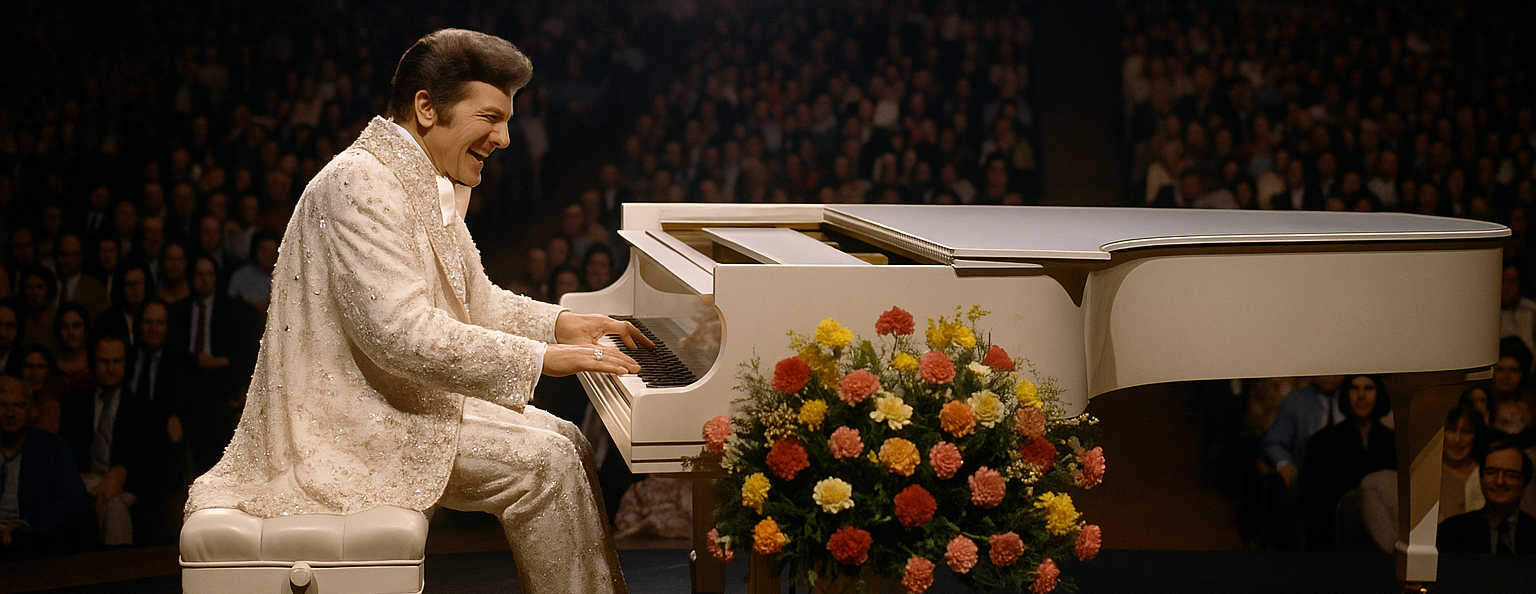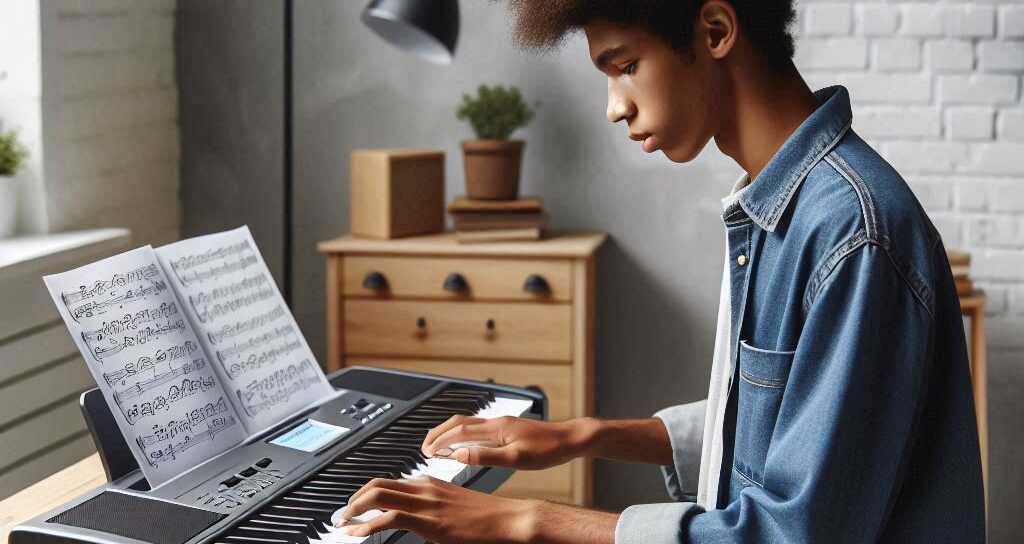The world of piano music owes much to its early innovators, those extraordinary talents who redefined what it meant to be a pianist. These trailblazers not only mastered the keys but also transformed the very art of performance itself. The names of these virtuosos are etched into the annals of music history, and any budding pianist would do well to familiarize themselves with their genius.
Franz Liszt stands out as a titan among these giants. He’s not just known for his nimble fingers and heartfelt compositions, but also for turning piano performances into grand events. Before Liszt, pianists sat and played; with him, it became a theatrical spectacle. His works demand not only technical prowess but also an emotional intensity that pushes pianists to connect deeply with their repertoire and their audience.
Consider Sergei Rachmaninoff, whose legacy is as grand as the chords he played. His Russian soul poured into every piece, crafting compositions that seemed to echo the vast Siberian landscapes. His mastery over his technique was unparalleled—in his concerts and his compositions, technique met passion. It’s like he knew the piano intimately, each note dripping with intent, making listeners feel like they were hearing a new language, one that speaks directly to the heart.
These pioneers set the stage for the future of piano music, each contributing to a rich legacy that shaped the pianistic world in profound ways. Understanding their music is akin to having a conversation with history, allowing students to stand on the shoulders of these creative giants. So, listen closely, and let their melodies guide your own musical journey.
A Touch of Glamour: Liberace and His Iconic Impact
For many, the name Liberace conjures up images of extravagant outfits and glittering pianos. Beyond the rhinestones and flamboyance, though, lay a musician whose remarkable skill had a wide-reaching impact. Liberace, with his charming smile and deft fingers, opened doors for classical music lovers and novices alike, proving that sophistication and showmanship can indeed walk hand-in-hand.
Liberace’s contribution to music was unprecedented. Known for blending classical piano pieces with pop sensibilities, he broke traditional barriers, making piano music both accessible and entertaining to wider audiences. By infusing humor and personality into his performances, he managed to capture the hearts of millions, bringing a taste of the concert hall to every living room.
Liberace was not just an entertainer; he was an artist in the truest sense. His ability to seamlessly shift from a Chopin etude to a Gershwin medley showcased not only his extensive repertoire but also a command of the piano that inspired admiration both from aficionados and casual listeners. His technique was robust and fluid, an enchanting blend of precision and flair that dared the traditional norms of classical music.
Music students and enthusiasts can learn a lot from Liberace’s artistry. He demonstrated that it’s possible to take classical training and spin it into something uniquely personal and fun. By embracing his individuality, Liberace set the stage for future pianists to let their personalities shine through their performances and compositions. His legacy serves as a reminder that music is not just about keys and notes—but also about connecting, touching, and inspiring audiences in ways that are genuinely unforgettable.
Twentieth Century Trailblazers: Innovators and Modernists
Piano music took some fascinating turns in the 20th century, with artists breaking new ground and shattering old conventions. These trailblazers didn’t just follow in the footsteps of their predecessors; they swiftly carved out their own paths, introducing the world to rich, diverse soundscapes full of innovation and emotion.
Jazz legends like Herbie Hancock redefined the piano’s role, blending classical elements with jazz improvisation. He unlocked new dimensions of musical freedom, proving the piano’s adaptability to genres and cultures. Through his dynamic performances, Hancock pushed boundaries, showing aspiring pianists that creativity knows no bounds.
Then there’s Keith Jarrett, who famously incorporated spontaneous creativity into his performances, transforming live concerts into unique, unrepeatable experiences. His approach to piano music was all about capturing the moment—a philosophy that brings a breath of fresh air and inspires students to let go of perfection and embrace authenticity.
Modern pianists, such as Lang Lang, have catapulted the instrument into a global spotlight with their charismatic stage presence and diverse repertoires. Their works are an eclectic blend of cultural traditions and contemporary styles, demonstrating that music is indeed a universal language. By exploring these modern sounds, students can gain invaluable insights into the evolving role of a pianist in the world today.
As technology continues to influence music creation, contemporary pianists are also embracing digital tools and platforms to innovate and share their art. For students, this presents new opportunities to experiment with sound, composition, and presentation, ensuring that the future of piano music remains as diverse and vibrant as ever.
The Listening List: A Soundscape of Pianistic Brilliance
Diving into the world of piano music can be a musical journey like no other, and there’s no better road map than a well-curated listening list. For students, this collection of recordings becomes a toolkit—providing a rich tapestry of styles and techniques to explore, analyze, and appreciate.
Start with the dramatic showmanship of Franz Liszt’s ‘Hungarian Rhapsodies’, which capture the vibrant spirit of his performance style. These pieces are essential for understanding the piano’s expressive power and virtuosity.
No list would be complete without the deep emotions and technical mastery of Sergei Rachmaninoff. His ‘Piano Concertos’, in particular, evoke a grandeur that challenges and inspires pianists to express themselves deeply through music.
Liberace’s recordings offer a unique blend of entertainment and skill, inviting listeners to experience how classical music can merge with pop culture. His playful yet technically precise renditions of pieces like ‘Chopsticks’ demonstrate a lighthearted approach that keeps audiences engaged and entertained.
The magic of Herbie Hancock’s jazz innovations is captured beautifully in ‘Maiden Voyage’, showcasing a new wave of piano technique that transcends traditional boundaries. For those interested in the intersection of jazz and classical music, his catalog is a treasure trove.
Keith Jarrett’s ‘The Köln Concert’ is a masterclass in live improvisation. It’s an exhilarating experience that invites students to see beyond the structured notes on a page, encouraging them to be bold and intuitive.
To embrace contemporary music, Lang Lang’s performances are a must-hear. Tracks like ‘The Lang Lang Piano Book’ highlight his blend of Eastern and Western influences, offering a glimpse into the diverse capabilities of modern piano performance.
Engaging with these recordings is more than just listening; it’s an essential practice for developing a nuanced understanding of the piano’s legacy and its future. They offer a world of exploration for aspiring pianists to develop their own voice and perhaps even inspire new sounds in the ever-evolving landscape of piano music.





